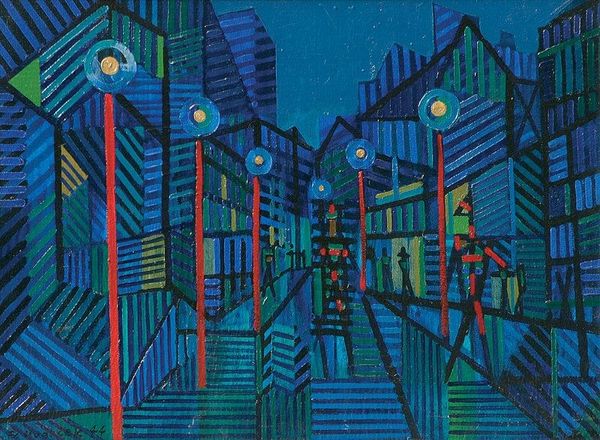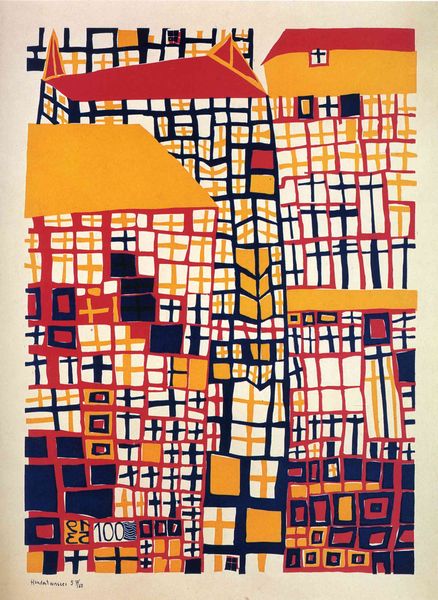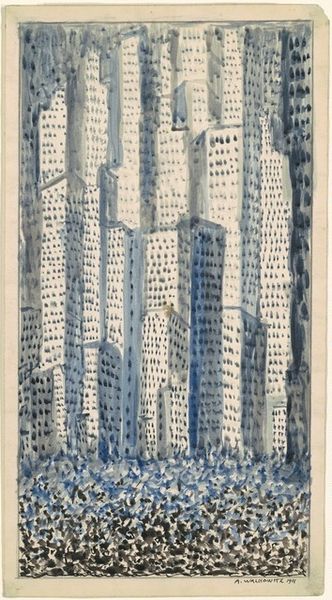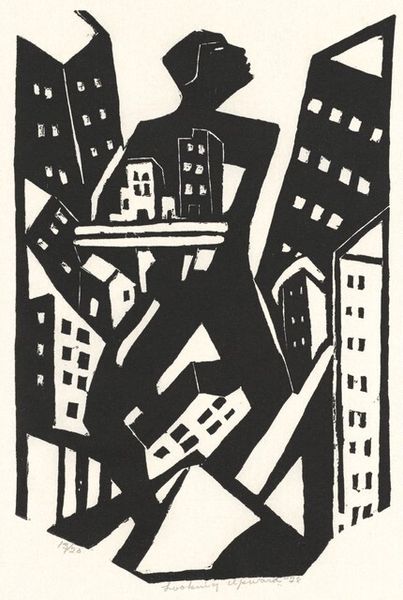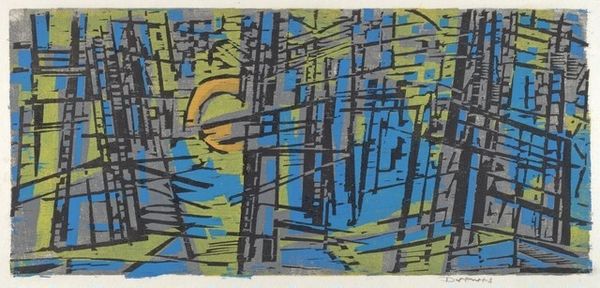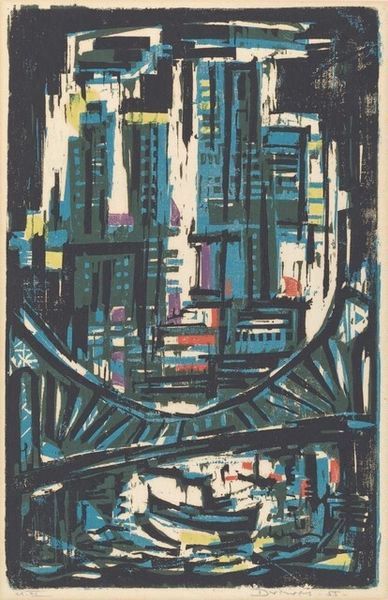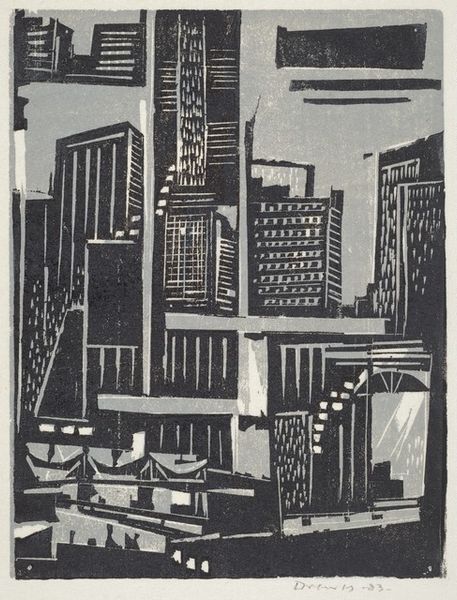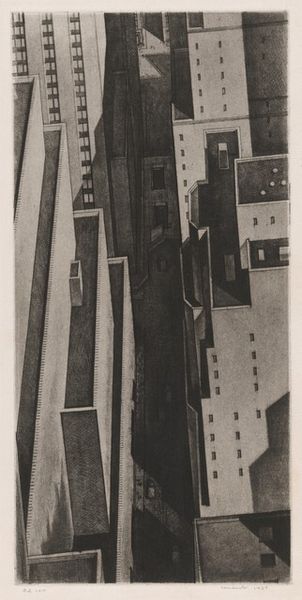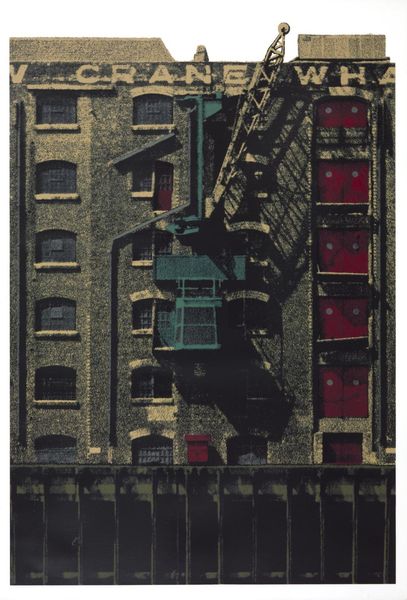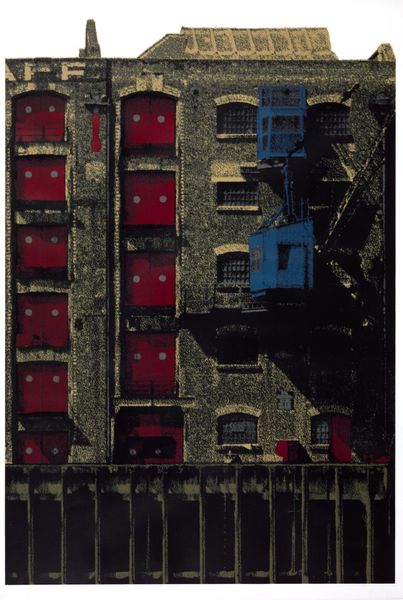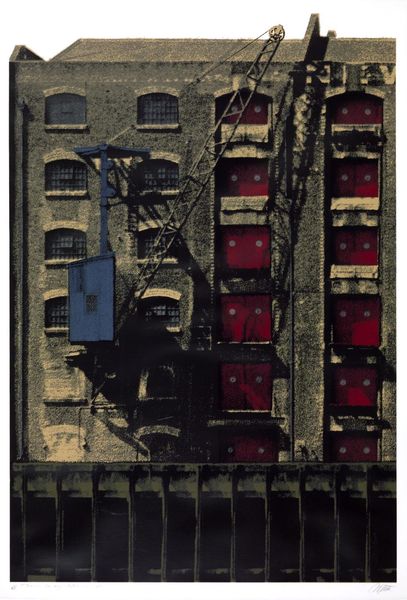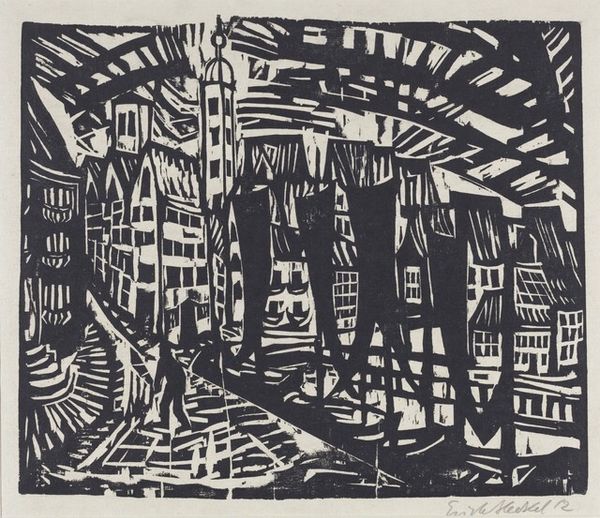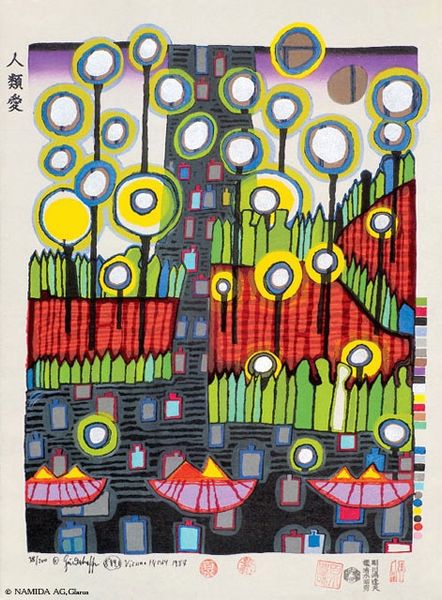
drawing, ink
#
drawing
#
blue ink drawing
#
german-expressionism
#
figuration
#
ink
#
pen-ink sketch
#
expressionism
#
line
#
sketchbook drawing
#
cityscape
#
modernism
Copyright: Public Domain: Artvee
Curator: There’s a real claustrophobia present the moment I lay my eyes upon this piece, this sensation of compressed space in Karl Wiener’s "Dunkle Gasse" made circa 1922. What’s your immediate impression? Editor: Yes, compressed, even oppressive! The weight of that darkness pressing down… But there's also a strange beauty, almost a ritualistic formality in the way the two figures at the foreground seem to be purposefully navigating the shadows. Curator: The artwork, rendered in ink, exemplifies German Expressionism, doesn’t it? You’re drawn into considering the post-war societal anxieties that found artistic expression in distorted perspectives and haunting themes. The sharp angles, the overwhelming blues and blacks... it reads as a physical manifestation of unease and alienation, don't you think? Editor: Absolutely, it is so demonstrative of this kind of expressionism, using visual shorthands of anxiety that burrowed into a society's visual language. Take the alley itself. The narrowing perspective converges at a vanishing point. It creates this tunnel vision that sucks us into something that feels beyond our control. Note the symbolism there. But more personally, I see the window-like openings scattered across the tall buildings--reminding me of closed, watching eyes. Curator: It almost stages the social and psychological landscapes of the Weimar Republic with their profound inequalities. Two figures, perhaps representing the bourgeoisie, positioned in stark contrast to the enveloping darkness… There’s a distinct awareness of class and power dynamics etched within that visual arrangement. What kind of statement would you say that this illustration tries to make? Editor: Precisely! These top-hatted figures seem dwarfed, consumed almost, yet they project this air of somber authority through their iconic association to the upper classes. It also highlights the duality—the societal facade presented versus the crumbling reality experienced in a morally compromised period. They also embody archetypes. As though these characters from dreams were captured and brought here into full awareness, if that makes sense. Curator: In seeing the architecture, then, the ink strokes and deep blues and blacks come into play with one another… It's as though Wiener is holding a mirror up to society itself, reflecting back the ugliness that simmers beneath a veneer of progress and propriety. The street is rendered as both menacing and inescapable. Editor: That feeling, the inescapable. That is a part of it's charm to me! To me it’s also about distilling collective anxieties, where art is used as a tool to face and give meaning to trauma by manifesting the unspeakable feelings people experience with clear imagery. Curator: Well, whether a mirror or a premonition, "Dunkle Gasse" certainly encourages us to consider what past shadows might still stretch before us now. Editor: Indeed, a shadowy, thought-provoking passage this piece delivers us into.
Comments
No comments
Be the first to comment and join the conversation on the ultimate creative platform.
